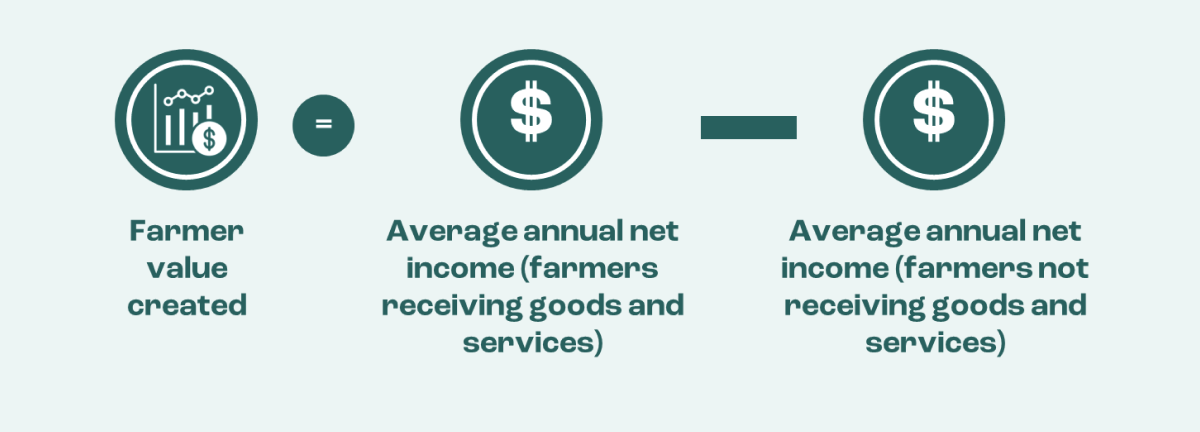Farmer Value Creation
What we mean by farmer value created
Among the key goals of smallholder-inclusive business models is to improve the livelihoods of smallholder farmers, their households and their communities. Furthermore, for any actors in agricultural markets – particularly donors or impact-first investors and enterprises – farmer value created is arguably the most important indicator in the FarmFit Insights Hub, as it looks at how much farmer incomes change as a result of the goods and services received through a smallholder-inclusive business model. This gives an idea of the value proposition a business model is able to provide to farmers, which is crucial to putting the other two indicators in the Insights Hub – Service Delivery Cost and Direct Cost Recovery – into perspective. For the former, it allows an analysis of how much value is created at the farm level for each dollar invested by a company, which in turn can inform what is an appropriate rate the company can charge farmers for the goods and services provided.
Farmer value created looks at the average annual difference in net income between farmers that have received goods and services from a particular business and those that have not. The change in net income is expressed in absolute USD.

Want to know more about how we define farmer value creation?
Our data on over 100 business models shows a huge spread in farmer value created results. Each dot in the below graph represents the farmer value created for each of the business model analyses that we have conducted till date. Figures range from a minimum of -$1,107 to a maximum of $4,953, with mean and median values of $910 and $615, respectively.
Among the many benefits of studying this indicator, there are two we want to highlight:
First, one, if not the, most important component of smallholder-inclusive business models is whether or not these models provide value for farmers. No analysis can be complete without including an indicator on this aspect.
Second, if we are to encourage more private sector investment, we need to think of interventions provided by the private sector as business models rather than development or CSR projects. And a core aspect of a commercially viable business model is a strong value proposition to the customer – in this case farmers. Put very simply, a commercially viable business model needs to create more value for its customer than what it invests. While there are
There are a range of more specific benefits to studying and understanding farmer value created that differ for different types of organizations:
Our insights on farmer value created
There is a huge spread in farmer value created for the 100+ models that we have analyzed, ranging from -$1,107 to $4,953. Till date, the Insights Hub has found the most interesting relationship between Farmer value created and the following other
Other outcomes
Contextual Drivers
Design Drivers
Your Insights Hub journey has just started
Sign up here for access to updates - and industry insights and innovation - from the Smallholder Inclusive Business Newsletter.